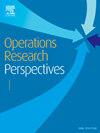A hybrid optimization and data-driven approach to understand the role of the risk-aversion profile parameter in portfolio optimization problems with shorting constraints
IF 3.7
4区 管理学
Q2 OPERATIONS RESEARCH & MANAGEMENT SCIENCE
引用次数: 0
Abstract
This study contributes to the optimization literature with an approach that would help investors understand how the risk-aversion profile hyperparameter affects excess returns, risk, and Sharpe ratio curves in portfolio optimization problems with short selling constraints. These curves were characterized by studying the original optimization problem and reducing it to a one-dimensional optimization problem. The problem variable was the excess return, and the minimum level of risk is expressed as a function of it. An approach to the functional form of the minimum risk level curve was also proposed, which allows us to determine an analytical expression for the aforementioned curves. The study provides significant results for the financial literature, such as (i) an upper and lower bound for the risk aversion profile hyperparameter; (ii) the optimal value for the risk aversion profile hyperparameter; (iii) a reduced version of the optimization problem that is easier to solve, and of course (iv) an analytical expression for the excess return, risk and Sharpe ratio curves as functions of the aforementioned hyperparameters. All of these results are reported using the Mean Squared Variance (MSV) portfolio optimization problem as the baseline model, representing the two objectives of the problem minimization function (excess return and risk) in the same unit.
一种混合优化和数据驱动的方法来理解风险规避剖面参数在有空头约束的投资组合优化问题中的作用
本研究为优化文献提供了一种方法,帮助投资者理解在有卖空约束的投资组合优化问题中,风险规避剖面超参数如何影响超额收益、风险和夏普比率曲线。通过对原优化问题的研究,将其简化为一维优化问题,对这些曲线进行表征。问题变量是超额收益,最小风险水平表示为它的函数。提出了最小风险水平曲线的函数形式的一种方法,使我们能够确定上述曲线的解析表达式。该研究为金融文献提供了重要的结果,例如:(i)风险厌恶概况超参数的上下界;(ii)风险规避剖面超参数的最优值;(iii)更容易求解的简化版优化问题,当然(iv)作为上述超参数函数的超额收益、风险和夏普比率曲线的解析表达式。所有这些结果都是使用均方方差(MSV)投资组合优化问题作为基线模型报告的,代表了同一个单元中问题最小化函数的两个目标(超额收益和风险)。
本文章由计算机程序翻译,如有差异,请以英文原文为准。
求助全文
约1分钟内获得全文
求助全文
来源期刊

Operations Research Perspectives
Mathematics-Statistics and Probability
CiteScore
6.40
自引率
0.00%
发文量
36
审稿时长
27 days
 求助内容:
求助内容: 应助结果提醒方式:
应助结果提醒方式:


